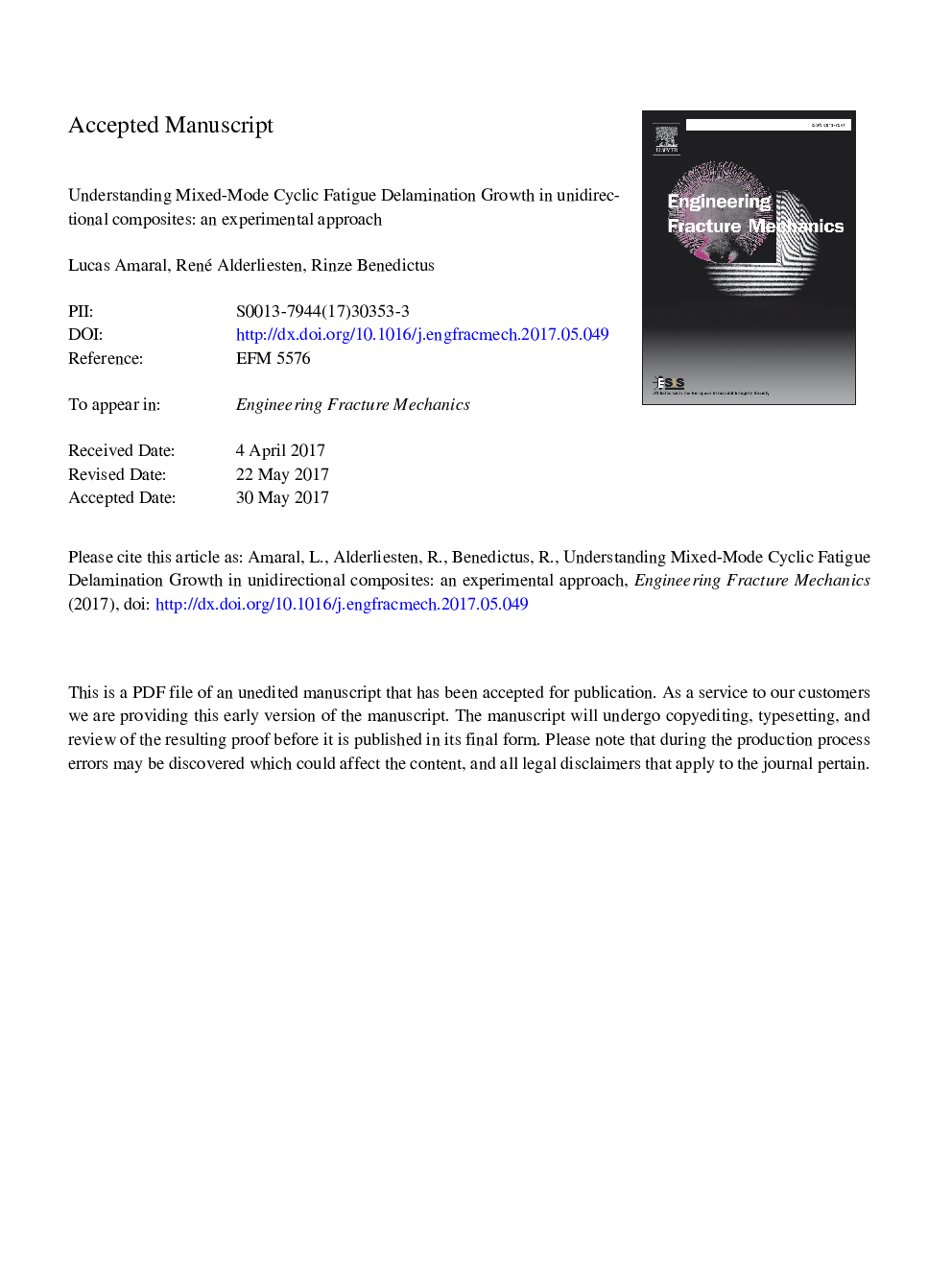| Article ID | Journal | Published Year | Pages | File Type |
|---|---|---|---|---|
| 5013848 | Engineering Fracture Mechanics | 2017 | 26 Pages |
Abstract
Due to the lack of fundamental knowledge of the physics behind delamination growth, certification authorities currently require that composite structures in aircraft are designed such that any delamination will not grow. This usually leads to an overdesign of the structure, hampering weight reductions. In real structures, delaminations tend to grow under a mix of modes I and II. Although some studies have tried to assess mixed-mode fatigue delamination, little progress was made in understanding the physics behind the problem. Therefore, this work scrutinizes mixed-mode fatigue delamination growth and examines experimentally the damage mechanisms that lead to fracture. To this aim, mixed-mode delamination fatigue tests were performed at different mode mixities, displacement ratios and maximum displacements. Selected fracture surfaces were analysed after the tests in a Scanning Electron Microscope to gain insight on the damage mechanisms. The physical Strain Energy Release Rate Gâ was used as the similitude parameter, enabling the characterization of fatigue mixed-mode delamination propagation. The results obtained show no displacement ratio or maximum displacement dependence. Furthermore, the energy dissipated per area of crack created is approximately constant for a given mode mixity. However, the analyses of the fracture surfaces and the correlation of the damage features with energy dissipation indicate that different damage mechanisms that might be activated under different loading parameters cause the resistance to delamination to change under a given loading mode.
Related Topics
Physical Sciences and Engineering
Engineering
Mechanical Engineering
Authors
Lucas Amaral, René Alderliesten, Rinze Benedictus,
